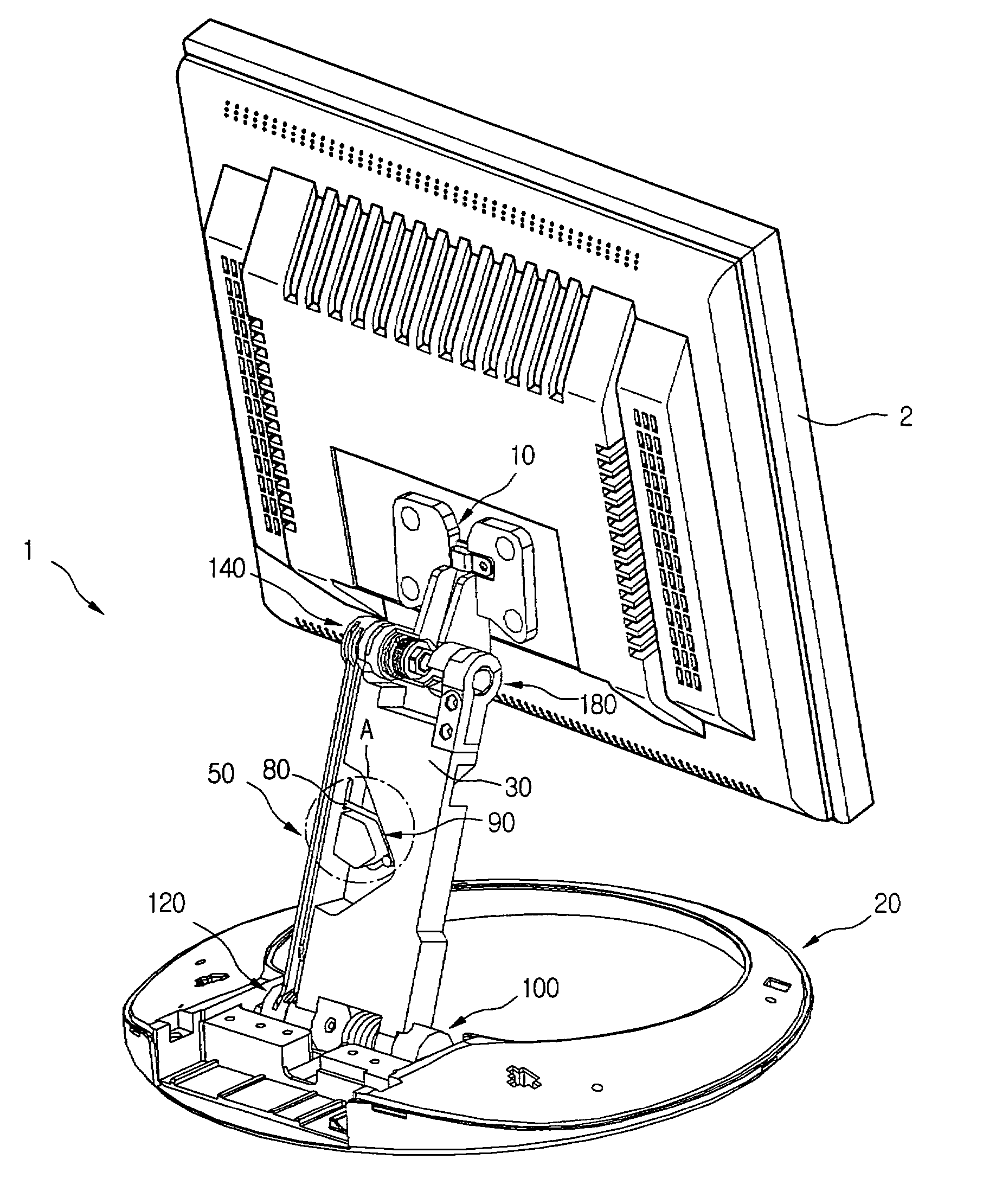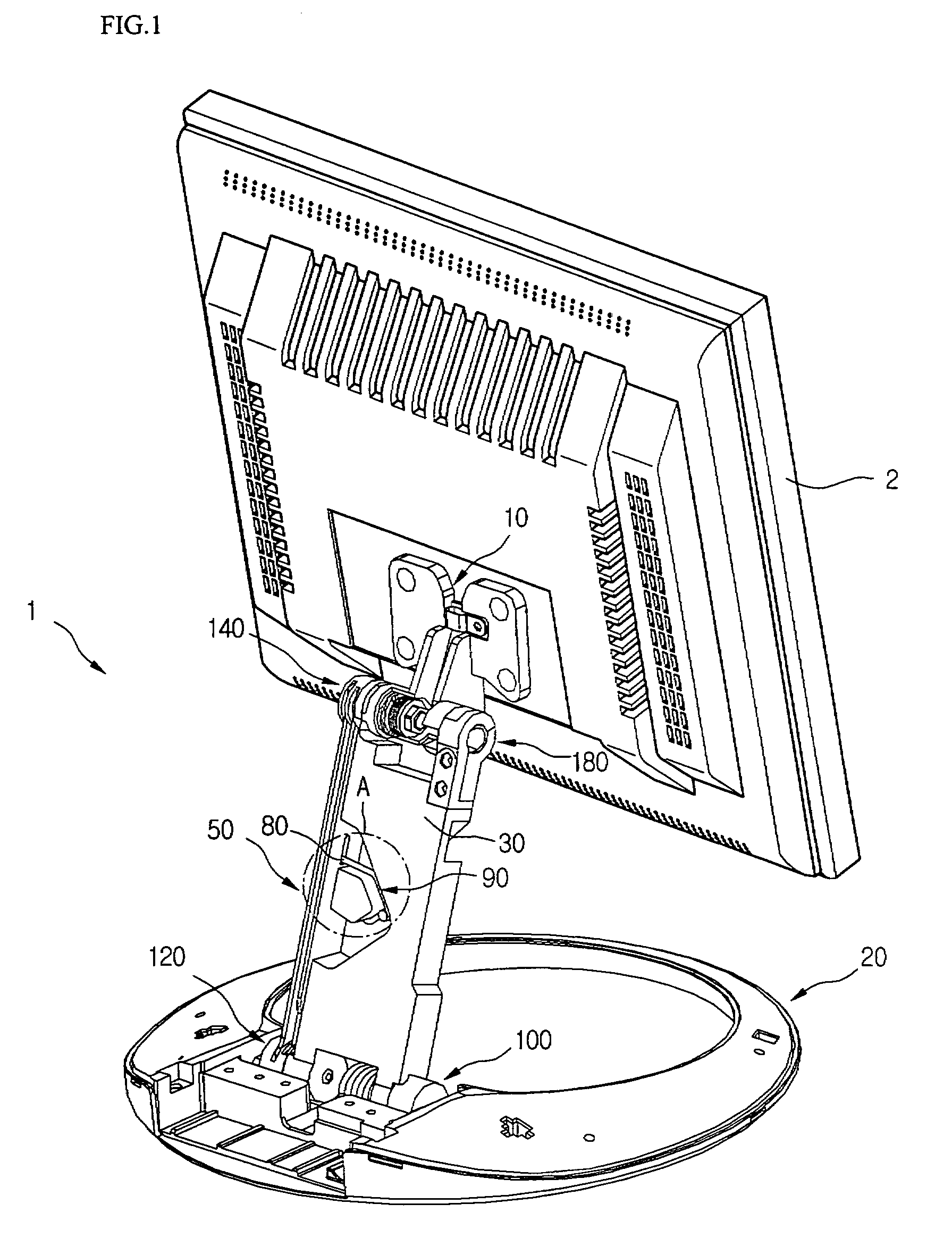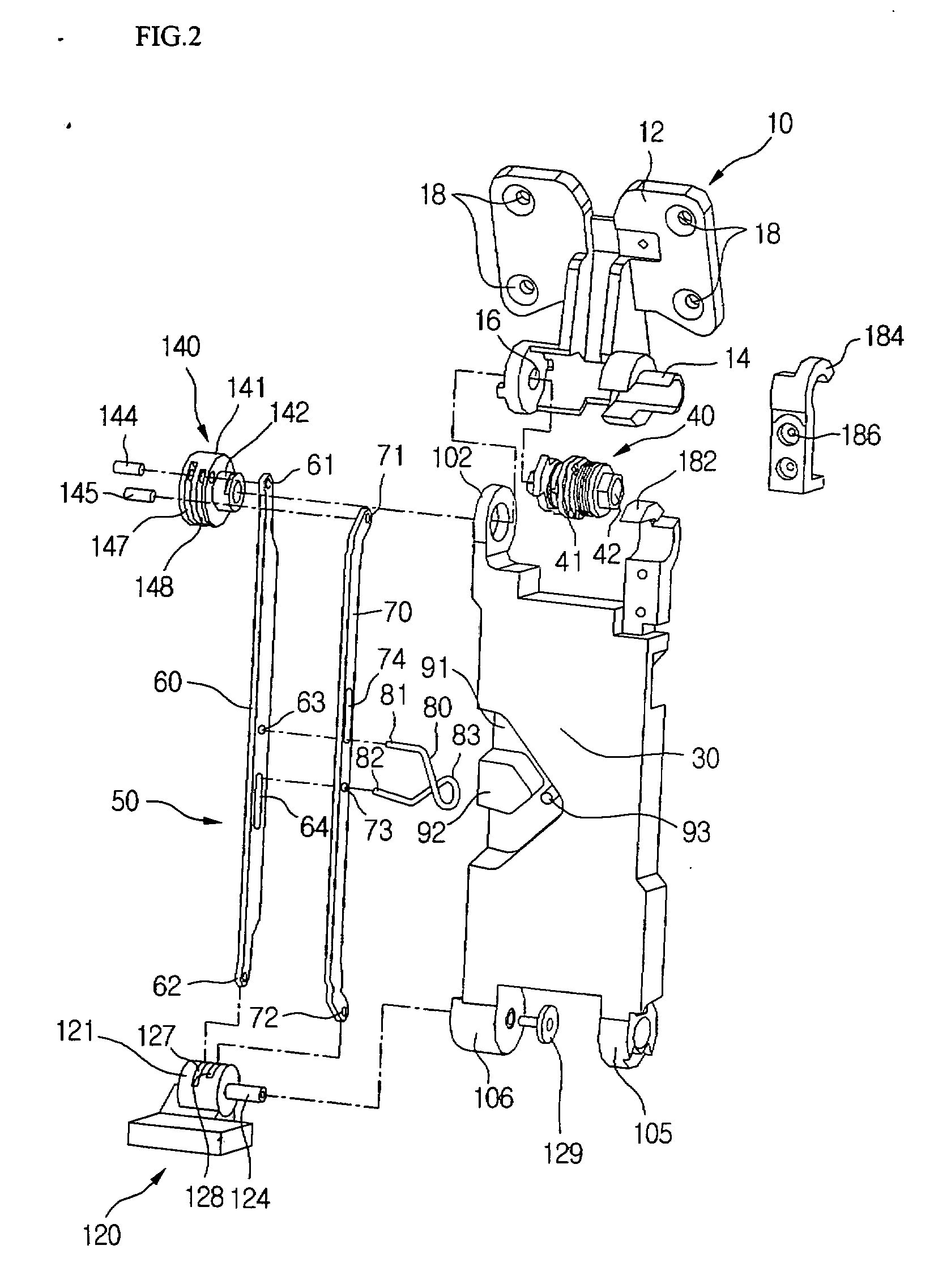Stand for display device
a technology for display devices and stands, which is applied in the direction of machine supports, instruments, cabinet/cabinet/drawer covers, etc., can solve the problems of disadvantageous thickness of main links and uneven unfolding of stands, and achieve the effect of less cost and simple manufacturing process
- Summary
- Abstract
- Description
- Claims
- Application Information
AI Technical Summary
Benefits of technology
Problems solved by technology
Method used
Image
Examples
first embodiment
[0032]FIG. 1 is a rear perspective view of a stand 1 installed on a display device according to a first embodiment of the present invention.
[0033] Referring to FIG. 1, the stand 1 includes a supporting unit 10 fixed to a rear surface of a display device 2 such as a liquid crystal display (LCD) monitor for supporting the display device 2, a base unit 20 for placing the display device 2 on a floor, and a main link 30 rotatably connected between the supporting unit 10 and the base unit 20.
[0034] The stand 1 further includes a auxiliary link unit 50 connected between the supporting unit 10 and the base unit 20 beside the main link 30, and a torsion spring 80 installed on the auxiliary link unit 50. The torsion spring 80 includes a center portion accommodated in a torsion spring receiving portion 90 formed in one side of the main link unit 30.
[0035] In detail, the supporting unit 10 is rotatably connected to the main link unit 30 by a first link hinge 180 and a second link hinge 140. ...
second embodiment
[0089] In the second embodiment of the present invention, the stand has the same structure as in the first embodiment, except for the structure and shape of the torsion spring. Thus, descriptions of the same structure and elements will be omitted.
[0090]FIG. 7 is an enlarged view showing a torsion spring 200 of a stand and a neighboring structure of the torsion spring 200 according to the second embodiment of the present invention.
[0091] Referring to FIG. 7, the shape and structure of the torsion spring 200 are different from those of the torsion spring 80 of the first embodiment. In detail, the torsion spring 200 has ends 201 and 202 that are coupled to a auxiliary link unit in the same manner as in the first embodiment. However, the torsion spring 200 includes a wound portion 203 corresponding to a portion around the center hole 83 of the torsion spring 80 of the first embodiment. The wound portion 203 of the torsion spring 200 is formed by winding the center portion of the torsi...
third embodiment
[0093] In the third embodiment of the present invention, the stand has the same structure as in the first embodiment, except for the structure and shape of the torsion spring and the torsion spring supporting structure. Thus, descriptions of the same structure and elements will be omitted.
[0094]FIG. 8 is an enlarged view showing a torsion spring 300 and a neighboring structure in a stand according to the third embodiment of the present invention.
[0095] Referring to FIG. 8, the structure of the torsion spring 300 is different from that of the torsion spring 80 of the first embodiment. In detail, the torsion spring 300 has one end 301 and a center hole 303 that are coupled to a auxiliary link unit in the same manner as in the first embodiment. However, the torsion spring 300 includes the other end 302 that is supported by a lower portion of a spring mount 92 but not connected or coupled to the auxiliary link unit. The other end 302 of the torsion spring 300 does not move when the on...
PUM
 Login to View More
Login to View More Abstract
Description
Claims
Application Information
 Login to View More
Login to View More - R&D
- Intellectual Property
- Life Sciences
- Materials
- Tech Scout
- Unparalleled Data Quality
- Higher Quality Content
- 60% Fewer Hallucinations
Browse by: Latest US Patents, China's latest patents, Technical Efficacy Thesaurus, Application Domain, Technology Topic, Popular Technical Reports.
© 2025 PatSnap. All rights reserved.Legal|Privacy policy|Modern Slavery Act Transparency Statement|Sitemap|About US| Contact US: help@patsnap.com



